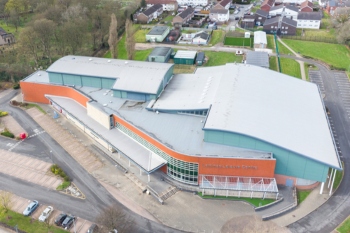
With rising energy costs and national decarbonisation targets, there is an opportunity for ‘energy hungry’ leisure centres to reduce their reliance on fossil fuels and tap into lower carbon technologies. Steve Wilkinson, director of energy performance contracts at Cenergist, explores how local authorities can navigate decarbonisation strategies for leisure centres.
The use of leisure facilities may be on the up according to Sport England, but rising costs including energy bills continue to put a strain on local authorities.
Research from gym and leisure centre operator membership body, ukactive, shows nearly two in five publicly operated leisure facilities are at risk of reducing services, lowering pool temperatures or closing entirely owing to high energy costs.
This highlights a major challenge for local authorities (LAs) as they look to ensuring they continue to offer these facilities against a backdrop of increased costs and overarching net zero carbon goals.
Leisure centres are inherently ‘energy hungry’ facilities and represent a significant opportunity for local authorities to take a meaningful step in reducing their carbon footprint and optimise buildings with energy efficiency measures. These include retrofitting energy, hot water, heating and cooling systems with modern, low carbon alternatives.
Over the last three years, the Public Sector Decarbonisation Scheme (PSDS) has provided LAs and public sector organisations with £2.5bn of funding towards decarbonisation projects. However, some LAs are yet to tap into this funding stream and unlock the benefits.
When it comes to leisure centre retrofits, there is an element of navigating the unknown alongside key challenges which need to be factored in to maximise the potential of these projects.
Why energy costs are critical in leisure
Leisure centres are high energy users in comparison to other buildings, particularly if they have a pool or are still using fossil fuels as their main energy source.
Managing energy costs is obviously a key priority but there is huge potential for carbon savings by retrofitting renewable energy systems. However, care must be taken to ensure that the system is designed correctly. For example, simply switching from a fossil fuel heating and cooling system to an electric system could cause running costs to increase.
A holistic approach to low carbon systems
A holistic approach to optimising the heating, ventilation, and air conditioning (HVAC) design needs to be implemented to ensure that the clients’ objectives are met.
This starts with an individual assessment of the building, because the size, location and type of facilities offered will all impact the most appropriate solution.
There is also an opportunity to use the heating and cooling provisions in different parts of a facility to optimise energy usage. Retrofit projects can utilise the provision of both heating and cooling by recycling heat not being used effectively. Ground source heat pumps and air source heat pumps can provide a viable alternative to fossil fuel systems, particularly because leisure centres typically have a consistent heat load without significant peaks or troughs, which drives further efficiencies. However, it is important to match the technology to the project and often the best results are achieved when technologies are combined. For example, on-site electricity generation through solar PV could offset the increase in electricity consumption associated with heat pumps.
There is also a need to consider the longer-term implications of the technologies installed, for instance ground-source heat pumps (GSHP) may be more expensive to install initially, but they have a longer life cycle than an air source heat pump (ASHP) and can be cheaper to run, which over their lifetime may make them more cost effective.
Minimising water waste to drive sustainability
With pools, showering and toilet facilities to support, leisure centres also have above average water demands which – if addressed – can support sustainability and reduce costs. In fact, measures to minimise water waste will not only help with the looming water scarcity crisis, but also enhance the efficiency of low carbon heating systems.
Water flow can be optimised with devices that regulate the naturally occurring water pressure fluctuations coming into the building and through outlets. This optimised flow reduces water wastage which in turn reduces the amount of water being heated, generating efficiencies in overall energy demands and mitigating carbon emissions further.
Key considerations for project plans
One thing to consider is that temporarily closing leisure facilities can have a significant impact on their community role and impact income.
So, the best way to undertake these types of projects is working whilst the building is closed or at quieter times of use. Unlike other public buildings, leisure centres tend to be open early in the morning to late in the evening, reducing the ‘downtime’ that these works can be carried out in.
This does present operational challenges, of course, but careful planning and clear communication with key stakeholders will almost always ensure that the project can be completed with minimal disruption.
A low carbon future for leisure
Retrofitting low carbon solutions into leisure centres presents a significant opportunity for LAs to take meaningful steps in their decarbonisation journey and ensure their essential public role continues.
By recognising the early challenges and key nuances around these projects, LAs can better leverage support from funding streams such as PSDS and expert guidance from experienced delivery partners.













